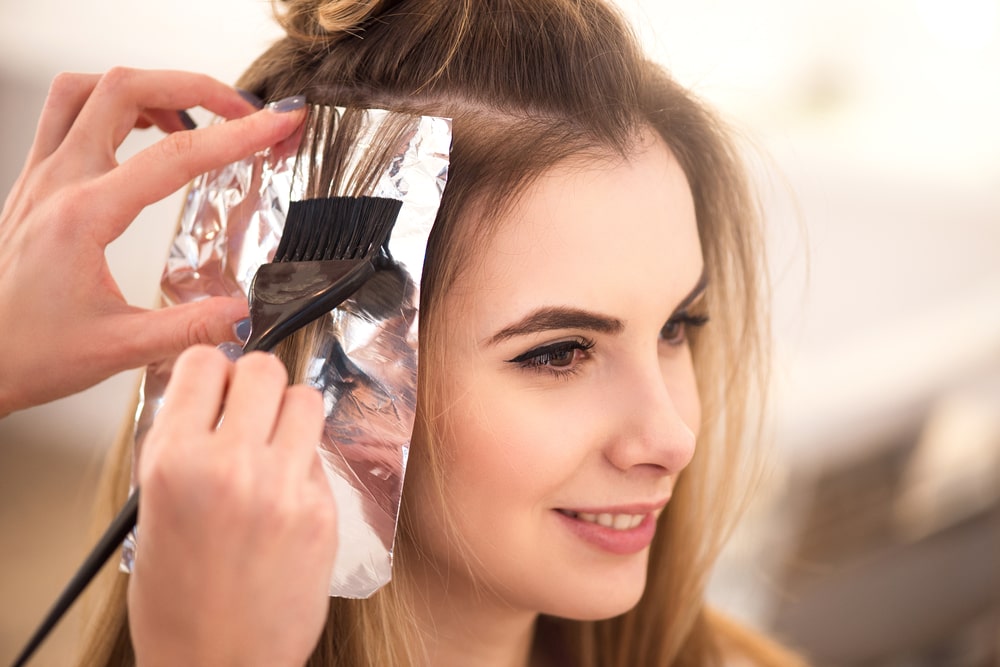Formulation and Evaluation of Hair Dyes: Hair dyes (colourants) are cosmetic preparations that are used by men and women either to change the natural hair colour or to mask grey hair. The properties of typical hair colourants are:
- The formulation of the hair colourant should be stable.
- They should colour the hair evenly.
- They should not lead to loss of the natural shine of hair.
- The shaft of the hair must not be damaged.
- The natural moisture of the hair must not be lost.
- Must possess properties like non-irritant and non-sensitizing.
- Must be non-toxic. Must impart stable colour to the hair.
- The coloured hair must be unaffected by air, water, sunlight, sweat, friction, shampoos, lotions, gels, oils etc.
Classification of Hair Colourants
Table of Contents
The major classification is listed as follows:
- Temporary hair colourants.
- Semi-permanent hair colourants/Direct dyes
- Oxidative dyeing systems: It includes: (a) Semi-permanent hair colourants. (b) Permanent hair colourants.
- Gradual hair colourants.
- Natural dyes.
1. Temporary Hair Colourants: They are leave-in preparations. The hair is not rinsed after the application of the colourant. The colourant is easily removed with one wash using shampoo because they are absorbed into the cuticle and cannot enter into the cortex of the hair. They are rarely called water rinses.
Temporary hair colourants consist of dyestuff and acid. The different dyestuff is acid dyes, basic dyes, metalized dyes and disperses dyes. Chemically the dyestuff is azo dyes, anthraquinone dyes, benzoquinone imine dyes, triphenylmethane dyes, phenazine dyes and xanthenic dyes. The hair colourants are available in different formulations like powders, crayons, liquids and shampoos.
2. Semi-permanent Hair Colourants / Direct Dyes: These colourants have a long-lasting. colour retaining ability when compared to colour shampoos. The colour produced is stronger as well. Dark colours are obtained with the colourants though they do not contain H2O2. This offers an advantage that the melanin of the hair doesn’t get bleached but is only masked with the colourant. The colour obtained on the grey hair is different from the black (pigmented) hair because of which the hairs are highlighted. The colourants are easily applied. This colour is not lost with one wash but is gradually lost in 5 – 8 washes with shampoo. Fragrance may be added to the composition of the colourant.
Ingredients: The semi-permanent hair colourants are composed of the following constituents.
- Dye
- Water
- Organic solvent like alcohol, derivatives of glycol.
- Fatty acid, fatty acid amide.
- Thickener.
- Surfactant
- Perfume
- Aliphatic primary amines which work as co-solvent and buffer.
Example: 2-amino, 2-methyl propanol.
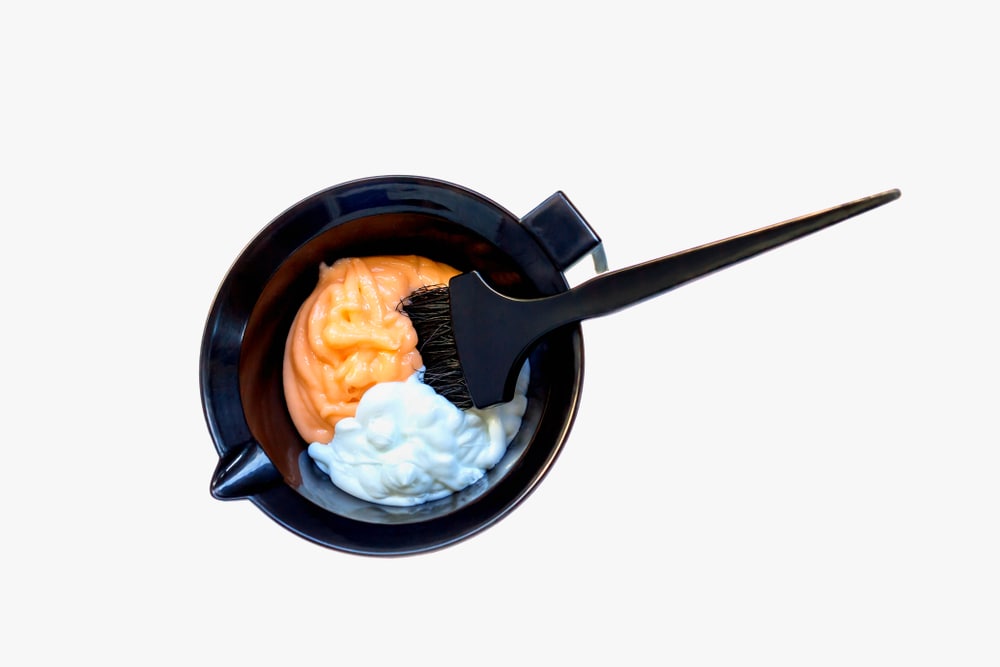
3. Oxidative Dyeing Systems: These dyes are also called ‘para dyes’. At the time of application, these dyes are colourless but turn to a particular colour after undergoing chemical reactions on the hair. The chemical reactions include the following reactions in alkaline pH, which are oxidation and coupling and condensation.
Ingredients: The ingredients of these dyes which render the above reactions are bases, couplers and oxidizing agents.
4. Gradual Colourant: It includes heavy metals in its composition. The hair is gradually coloured with several applications of the colourant. The heavy metals used are lead or bismuth in their salt forms. The salts of the heavy metals are made into solutions and are used in the preparations. The preparation is applied many times because the colour develops gradually.
Demerit: Since the preparation includes heavy metals, it offers negative effects on health. Therefore the use of these colourants is declined.
5. Natural dyes: Since, antiquity, plant materials are looked upon as beneficial sources for various ailments and other purposes. The leaves are used as colourants:
(a) Henna: The leaves of henna are powdered and sold. The paste is formed by mixing the henna powder in hot water. The paste is directly applied to the hair and a warm towel is wrapped around the head to enhance the colouring effect. lt gives the reddish colour to the hair. Henna is non-toxic and non-sensitizing.
The active constituent of henna is lawsone, which is chemically 2-hydroxy-l4 – naphthoquinone. It is responsible for imparting the colour. Indigo leaves or synthetic indigo is added to henna to alter the colour. Apart from this, pyrogallic acid and metallic salts like copper sulphate are added. An increased level of pyrogallic acid added to henna gives darker shades.
(b) Camomile: The flowers of camomile are used to obtain the colour. The flowers which contain the active principle are powdered. Its paste is made by mixing the powder with hot water and applied on the hair. A warm towel is wrapped over the head to enhance the colouring effect. The colour achieved is due to the navy blue volatile oil obtained in the process.
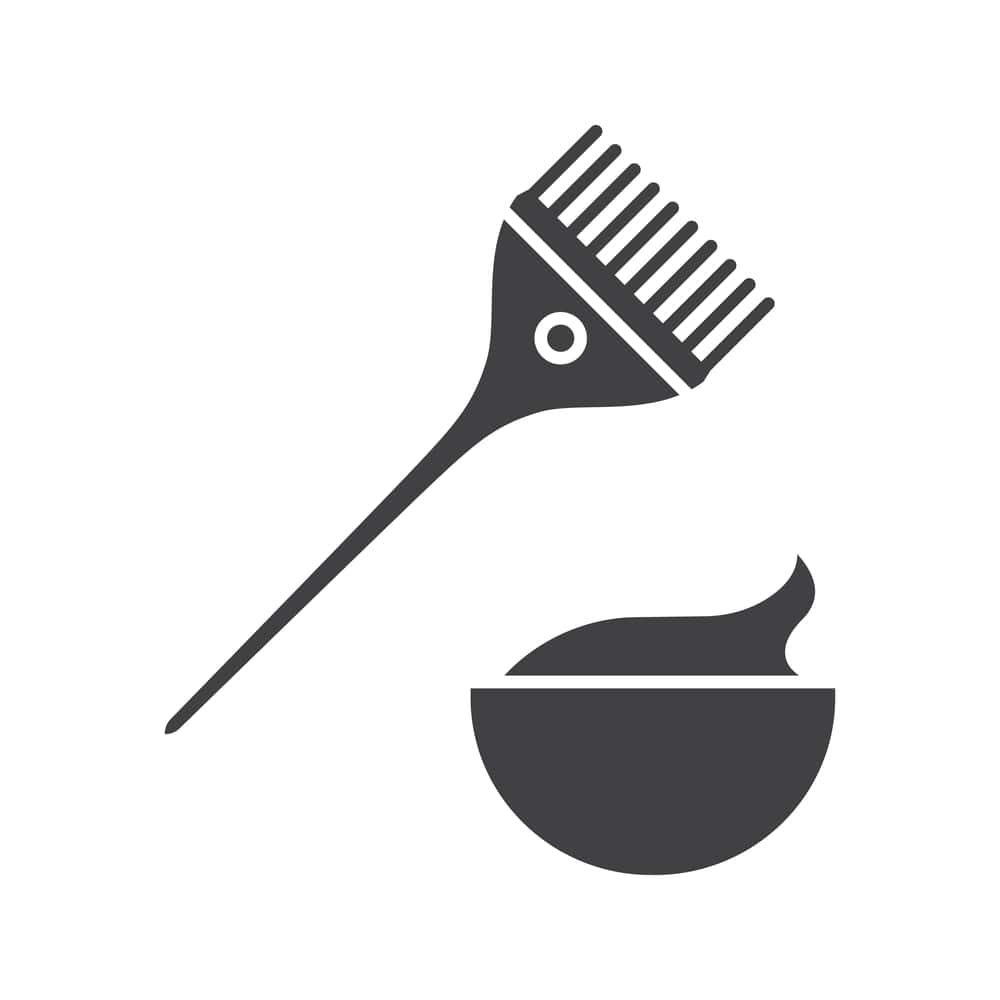
Formulations of Hair Dyes
- Formulation bases
- Alkalizing agents.
- Dye components: It includes an oxidation base and coupling agent.
- Oxidizing agents
- Antioxidant.
- Solvents
- Surfactants
1. Formulation bases: They are used as vehicles for dyes (amino dyes) and modifiers. The vehicle is one that uniformly distributes the colourant mixture on the hair. Example: In amino dyes, a mixture of water (48-7945%), ethyl alcohol (20-50%) glycerin (0.5 – 2%) is used because the amino dye has low aqueous solubility.
2. Alkalizing agents: The alkalizing agents are added.
- To increase the pH of the formulation to an optimal level.
- To generate active oxidizers from hydrogen peroxide.
- To swell the hair fibres for absorption of the dye.
Examples of alkalizing agents include ammonia, Monoethanolamine.
3. Dye: Dyes are used to imparting the desired colour shade to the hair.

4. Oxidizing agents: Oxidant is added in the composition of the colourants to generate active species (like p-phenylenediamine, benzoquinone monoamine) for coupling. Oxidants are used to bleach melanin present in the hair. Light colour shades are obtained when the grey and pigmented hair are coloured evenly by using semipermanent colourants.
5. Antioxidant: During the manufacturing of dyes, especially amino dyes, an atmosphere of nitrogen is maintained to prevent the darkening of the dye. Since dyes (amino dye) are darkened on exposure to air. Instead of maintaining nitrogen atmosphere, chemical antioxidant like sodium sulfite is included in the preparation.
6. Solvents: The constituents of the colourants which are not soluble in water, are dissolved by using solvents so that a homogenous system is obtained.
7. Surfactant: It reduces the surface tension between the different ingredients, to make a homogeneous preparation.
Method of Preparation of Colourant:
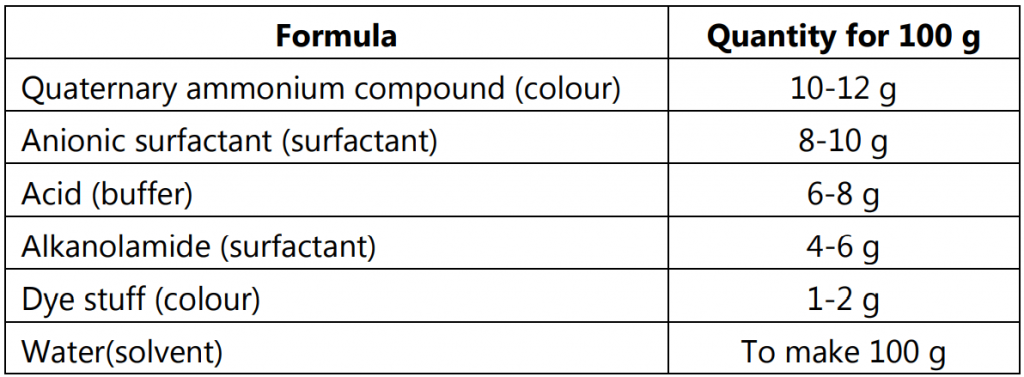
- A mixture of alkanol amide and anionic surfactant is prepared.
- The dye is added to the above mixture* and is dissolved.
- The acid and quaternary ammonium compounds are dissolved in water.
- This aqueous solution is added to the solution of dye with stirring.
- This dye is investigated for the effects of quaternary ammonium compound, pH, aldehydes and alcohols additions.
- Now the viscosity of the dye is adjusted by adding hydrophilic colloids like methylcellulose, natural gum etc.
- The viscosity of the colourant is increased by the addition of a non-ionic thickener in its composition. The addition of amphoteric surfactant in the colourant is accompanied by basic dyes.
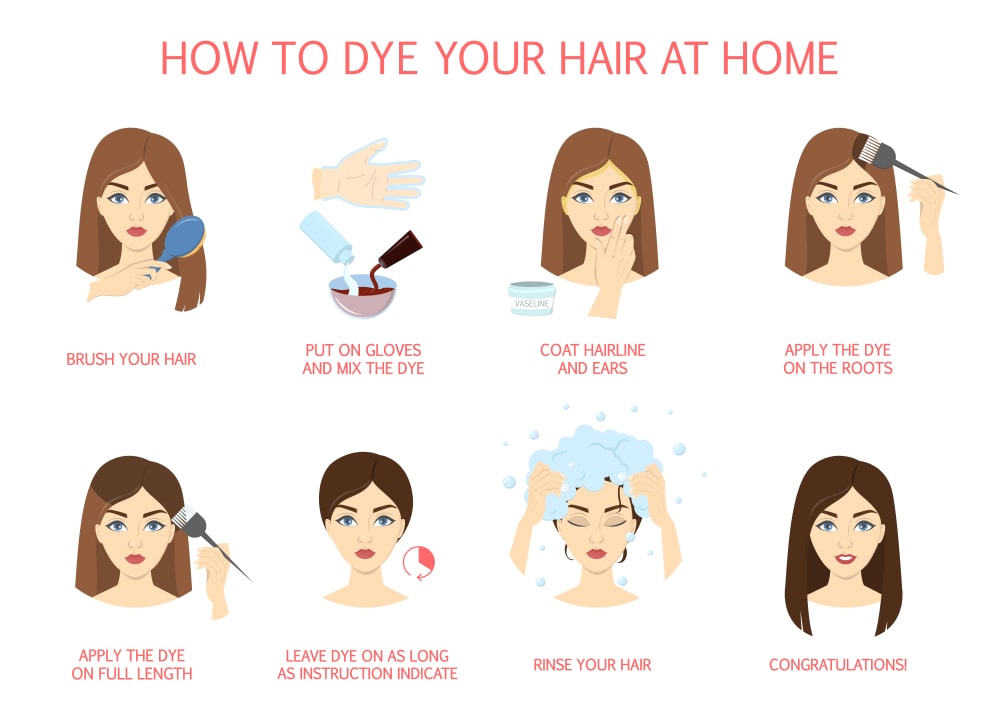
Evaluation of Hair Colourant
The following tests are carried out to evaluate hair colourants:
1. The Sensitization Test: The test is carried out on animal skin. The colourants are applied to the skin and are kept under observation for 24 hrs. If no reaction occurs, then the colourant is said to be non-sensitizing or non-irritant. The histopathological study is carried out as per requirements.
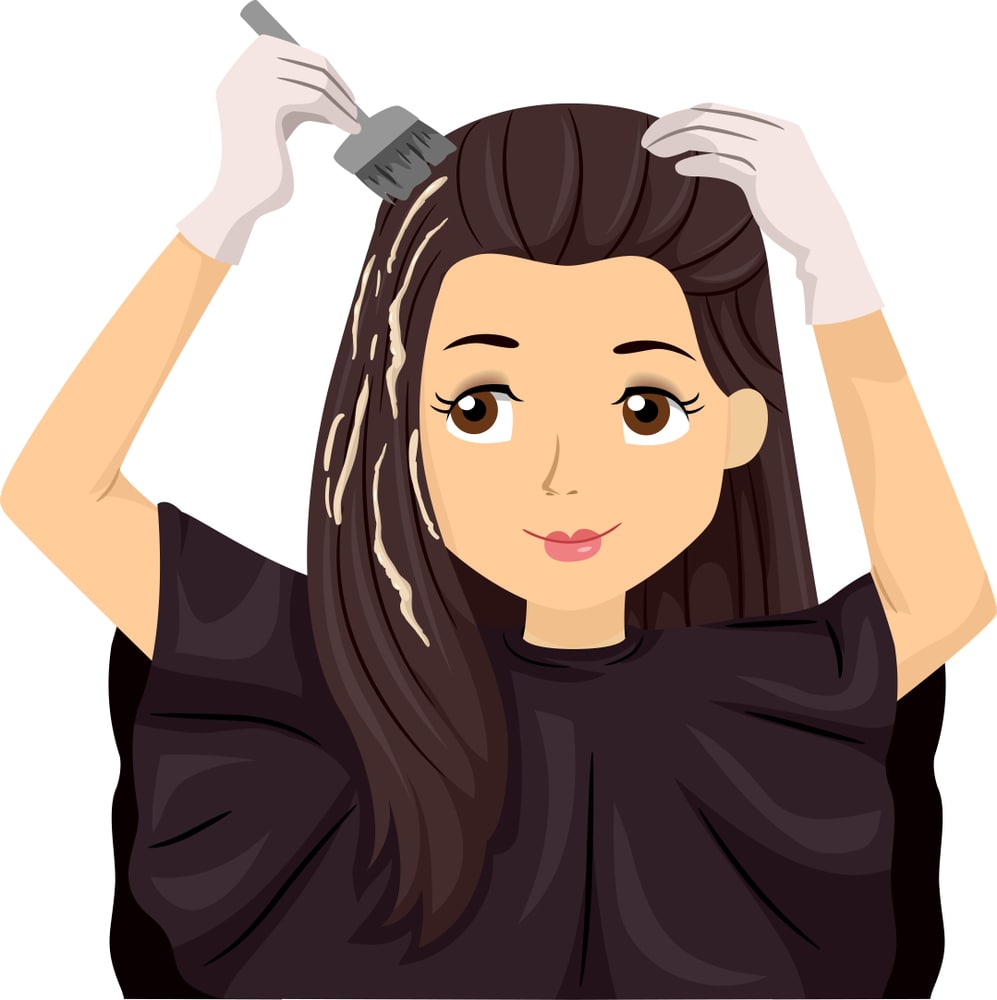
2. The Toxic Effect Test: Toxic effects are studied in animals to know about the long term effects of the preparations.
Make sure you also check our other amazing Article on : Vanishing Cream
